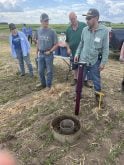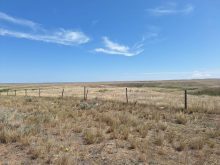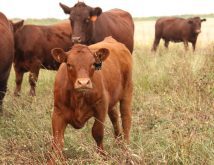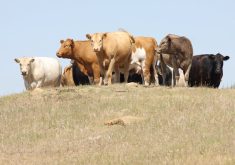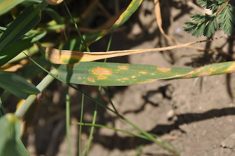Improving the Prairies: Upcoming conference will allow producers to compare notes on what works and what doesn’t
This story is part of an ongoing series that looks at how many farmers are attempting to preserve their soil while increasing profits. You can find the first story in this series – For the love of soil – here.
VIRDEN, Man. — Some things work, some things don’t.
This year has turned out to be a great one for finding out what innovative pasture techniques work during extreme drought.
“We’ll try it again,” Larry Wegner, a western Manitoba livestock producer, said after witnessing an in-field failure.
Read Also

Farming Smarter receives financial boost from Alberta government for potato research
Farming Smarter near Lethbridge got a boost to its research equipment, thanks to the Alberta government’s increase in funding for research associations.
“It came up, it looked good and it just slowly died as the season went on.”
Other stories in this series:
- Improving the Prairie
- For the love of soil
- Farm diversifies while improving environment
- Sustainability called evolution, not quick cure
This spring Wegner tried seeding a polycrop of annuals into an existing perennial pasture. After seeding he had his livestock severely graze the pasture and then took them off so the annuals could grow up through the low-clipped perennial forages.
It could have provided a rich feed source for the next grazing, but the annuals never had a chance.
“It was dormant because it was so dry in June,” said Wegner, who is chair of Manitoba Forage and Grassland Association, which champions the development of farming systems that can withstand both shocks and the grinding yearly reality of tough farm economics.
Then it rained, the seeded crops popped up, then they got roasted and desiccated by the resumption of the drought, and little ever appeared.
Wegner wants to try out the approach again — hopefully without severe drought this time — so that he can get a better sense of whether it’s a good idea.
It’s the sort of real-world testing based on interesting ideas that many farmers have been practicing, some for decades, but which have been made more vital by the onset of severe drought in Western Canada.
Presenting and discussing interesting ideas and the real-world results on farms of such approaches will be part of what Wegner hopes happen at the fourth annual Regenerative Ag Conference his association is hosting in Brandon Nov. 15-17.
Agricultural systems innovators from South Africa, New Zealand, the United Kingdom and Argentina will share their knowledge, and Canadian farmers will be able to compare notes on things they have tried and results they have had.
They are all practitioners of a non-ideological approach to farming that is attempting to develop a system to preserve and improve the natural resources farmers are working with while providing a more stable and secure economic base for farm families.
“(The goal is to) find the natural cycles and try to make them work with us,” said Wegner.
For most of the farmers involved in what’s being called “regenerative agriculture,” modern technologies and inputs are fine to use if they lead toward a good result.
“We’re not against modern technology,” said Wegner.
That makes it quite different to other alternative forms of farm production, such as organic, which often have strict rules about methods, inputs and technologies involved in producing crops or meat.
“Were not anti-spray or anti-fertilizer. It’s just a matter of how do we do what we need to do (to preserve the natural base of the farm) and improve the bottom line (at the same time?) And a matter of solving the problem and not treating the symptoms.”
The term “sustainable” was bandied about for many years but seems to be going out of fashion due to the extreme range of meanings it appears to have for various people.
As well, many farmers practise environment-boosting approaches just for the sake of preserving and improving their piece of managed nature. If there’s vibrancy and richness on the farmland of the Prairies today, it’s because somebody is doing something, or not doing something, that allows it to exist.
Wegner is keen to try out his on-farm experiment again and to keep hearing from other farmers about what works and doesn’t work for them. With enough experimentation, development and open-mindedness, situations like this year’s drought could become a lot less devastating.
“If we’re having climate change and the weather is supposed to be more severe and changing, we have to figure out how to go ahead with it,” said Wegner.
“There’s nothing set in stone. We’re still trying to figure out how it works.”
For more content related to drought management visit The Dry Times, where you can find a collection of stories from our family of publications as well as links to external resources to support your decisions through these difficult times.







